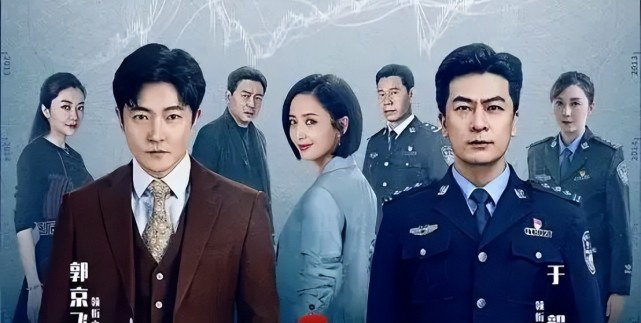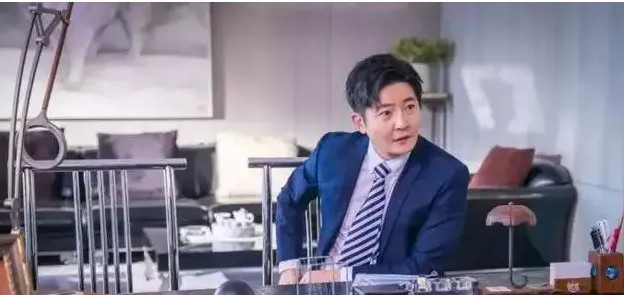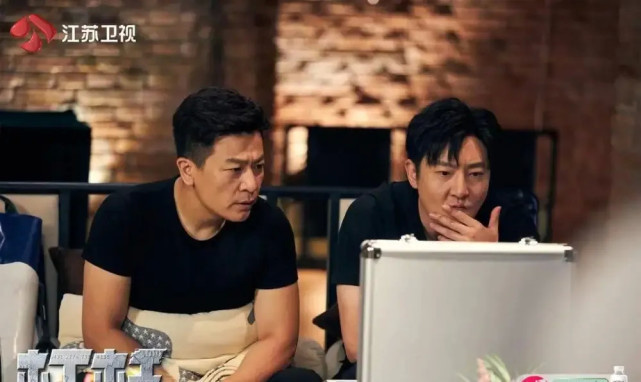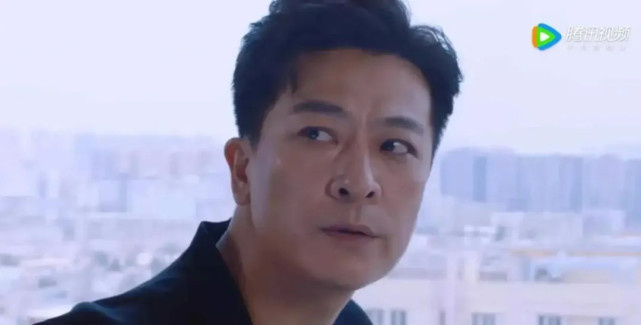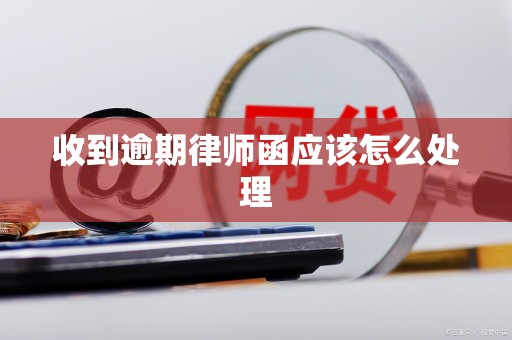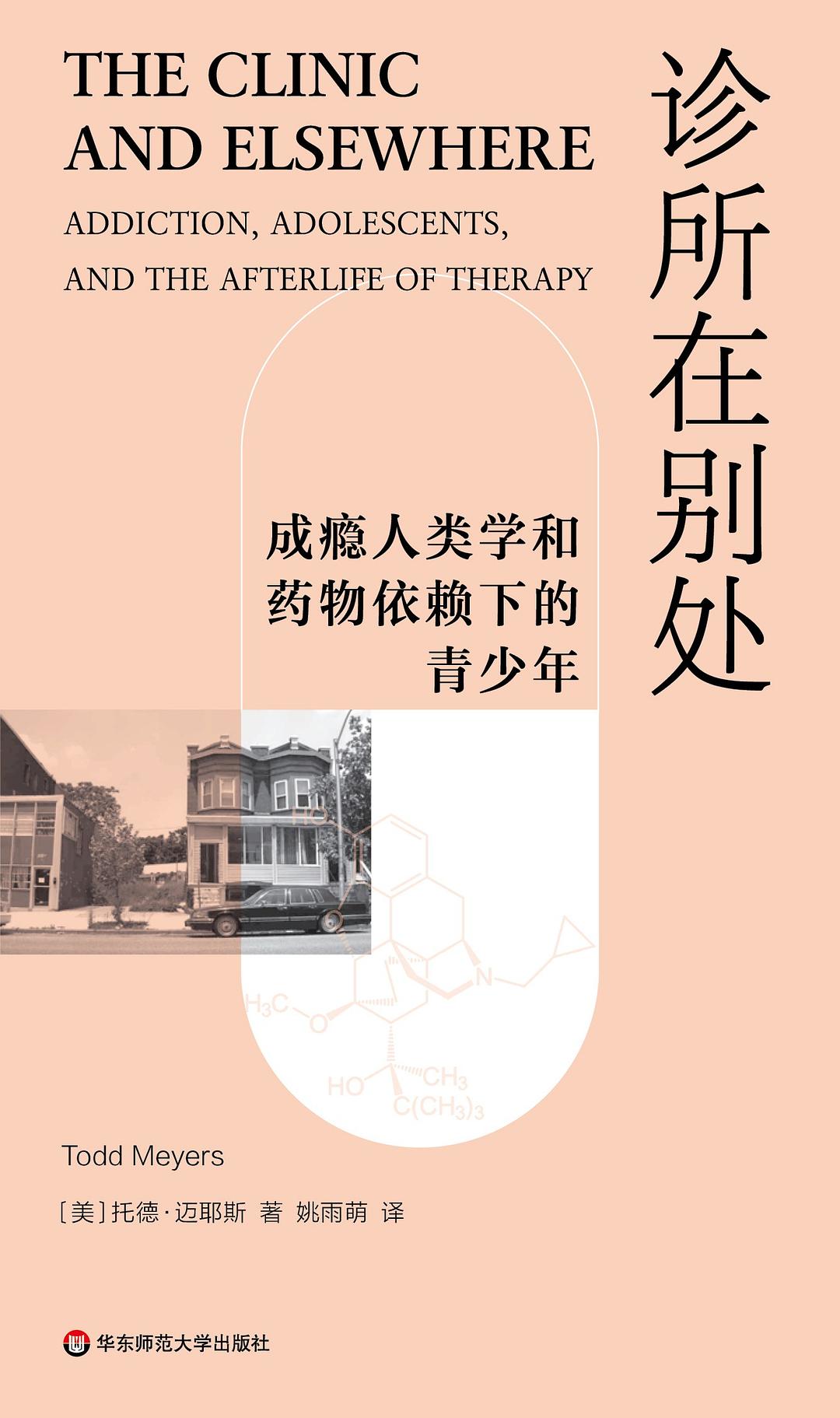
The clinic is elsewhere: the anthropology of addiction and adolescents under drug dependence, by Todd meyers, translated by Yao Yumeng, mint experiment, East China Normal University Press, May 2024, 248 pages, 55.00 yuan.
Since the end of the last century, a "ghost", the "ghost" of opioid abuse, has been wandering in the land of the United States. This crisis caused by the abuse of opioids has been named "opioid crisis", which has caused more than 650,000 American deaths in the past two decades and brought 1.5 trillion US dollars in economic losses to the United States in 2020 alone. In 2017, the US government officially declared this opioid crisis as a "national public health emergency" and it has continued to this day. It is still unknown when this "ghost" of opioid abuse will disappear from the land of the United States.
In The Clinic Elsewhere: Addiction Anthropology and Teenagers under Drug Dependence, which was recently introduced by Mint Experiment of East China Normal University Press (The clinic and elsewhere: addiction, adolescents, and the afterlife of therapyClinics and Other Places: Addiction, Teenagers and the Future of Treatment.), anthropologist Todd meyers tracked the lives of twelve teenagers who were treated for opioid addiction in a clinic in Baltimore, USA. However, as the author said, this book is not a narrative about the pain experienced by young people addicted to opioid drugs, but an ethnography of "anthropology of therapy". In this book, the so-called treatment refers to buprenorphine, which has become a star in the treatment of opioid addiction in the past two decades.
The twelve teenagers followed by meyers all received buprenorphine treatment in the clinic and participated in related clinical trials, but their outcomes after leaving the clinic were quite different. What happened to these teenagers after they left the clinic? A treatment that has been proved to be effective in clinical trials, why is it so different when it comes back to the real world? How can we define whether a certain treatment is successful? To answer these questions, we must leave the clinic and go to the place where the teenagers are outside the clinic, so as to see, in meyers’s words, the so-called "afterlife of therapy". However, before visiting the later generations for treatment, we need to look back on the profound changes in the mainstream view of opioid addiction in American society in the past twenty years to understand the special significance of treatment and buprenorphine in the treatment of opioid addiction. What needs to be known is that buprenorphine itself is a strictly controlled opioid. In history, not everyone agrees that opioid addiction can and should be treated, let alone that one opioid can be used to treat another addiction. But now this treatment has become an increasingly mainstream method to fight opioid addiction in the United States.
Opioid crisis in the United States
Opioid drugs are a large class of drugs that act on opioid receptors in human body and produce morphine-like effects, including natural compounds (such as morphine and codeine) extracted directly from poppy, semi-synthetic compounds (such as heroin, dextromethorphan, oxycodone and buprenorphine) and compounds (such as methadone, pethidine and fentanyl) synthesized completely in the laboratory. They are used for medical purposes such as analgesia, cough relieving, diarrhea stopping and anesthesia, but they are strictly controlled in different countries because of their euphoria and high risk of addiction.
In the past two decades, the problem of opioid abuse in the United States has been deteriorating. According to the latest data of Global Burden of Disease Research (GBD 2021), the number of patients with opioid use disorders in the United States has exceeded 6.6 million in 2021, equivalent to nearly one-fiftieth of the population of the United States, which is nearly seven times higher than that in 1990. Opioid drugs can affect the respiratory center of the brain, and overdose is easy to kill. Nearly 80% of drug deaths worldwide are related to it every year. After 2021, the number of deaths from opioid overdose in the United States exceeded 80,000 each year (equivalent to more than 200 people a day), nearly 10 times that of 2000. This mortality rate almost offset all the efforts made by the United States to improve the health level of the population, making the average life expectancy in the United States stagnate at 78.5 to 78.8 years before the COVID-19 epidemic, and the gap between the United States and other developed countries has been widened, and it has dropped significantly to 77.4 years after 2020, while the average life expectancy in China has risen to 78.5 years in the same period.
Since the end of last century, the opioid crisis in the United States has gone through three main stages. The first stage began in the 1990s, which was triggered by the abuse of prescription opioid painkillers such as Oxycontin, and originated from the over-marketing of pharmaceutical companies and the massive pain management advocacy campaign. The second stage began around 2010, characterized by the increase of heroin abuse. At that time, the US government strengthened the supervision of prescription opioid painkillers, while the price of heroin fell, and a large number of people who were addicted to prescription drugs began to take heroin. The third phase of the crisis began in 2013, dominated by the abuse of powerful synthetic opioids such as fentanyl, surpassing prescription drugs and heroin. Recently, some scholars have suggested that with more and more abusers mixing fentanyl with cocaine, ice and other stimulants, the opioid crisis in the United States has entered the fourth stage.
Moral model of dealing with drug addiction
There are two traditional models to deal with drug addiction. The first is the moral model, which holds that drug addiction is the result of personal moral problems and personal choices and is not worthy of sympathy. Addicts should bear the consequences of addiction by themselves, so they need to be corrected and punished to abide by the universally recognized morality of society. The second is the disease model, which holds that drug addiction is a brain disease in the final analysis, which is related to the genetic genes, environmental factors and brain structure of addicts. Therefore, addicts need medical treatment, not personal correction and punishment.
In American history, the moral model has occupied a dominant position for a long time, tending to moral condemnation and adopting tough judicial means to correct and punish. This tradition can be traced back to the prohibition movement in the 19th century. At that time, the problem of alcoholism in the United States was very serious, which led to an increase in domestic violence. At first, the prohibition movement was mainly led by clergy, and the problem of excessive drinking and public drunkenness was reduced through moral exhortation. Supporters of the prohibition movement would mark a capital "T" next to their signatures, indicating that they were teetotaler and had zero tolerance for drinking. Although the prohibition movement reduced the amount of alcohol consumed by Americans, by the middle of the 19th century, the invention of hypodermic syringe made morphine widely used in the United States. In addition to relieving pain, morphine is also regarded by doctors as a "panacea" for various health problems. In addition, morphine was also widely used to treat wounded soldiers during the American Civil War. This has led to a significant increase in morphine addicts.
Therefore, in the following decades, the U.S. government has successively issued a series of increasingly strict laws to control opioids. The Pure Food and Drug Act of 1906 (Pure Food and Drug ActAll manufacturers of patented drugs are required to indicate addictive ingredients (mainly opium, morphine, cocaine, caffeine and marijuana) on drug labels. In 1909, the Opium Smoking Prohibition Act (Smoking Opium Exclusion Act) became the first federal bill in American history to explicitly prohibit the use of opioids for non-medical purposes. In 1914, the Harrison Narcotic Drugs Tax Act (Harrison Narcotics Tax Act) began to control the provision of opioids by doctors to addicts. In 1919, in Webb v. United States, the Supreme Court of the United States further ruled that drug addiction is not a disease, and doctors should not use opioids for the treatment of addicts. This ruling is equivalent to opposing the disease model of drug addiction in the legal sense, and has become an important basis for a series of drug policies in the United States in the future.
In 1930, the United States established the Federal Bureau of Narcotics Drugs, with Harry Jacob Anslinger as its director. During his 32-year tenure, Anslinger implemented extremely strict anti-drug measures. He is a staunch opponent of the disease model, and his attitude towards drug abusers is also very clear, that is, "arrest them and throw away the keys." The Boggs Act of 1951 (The Boggs Act) at the federal level, a mandatory minimum penalty is set for drug crimes. In the Nixon era, the "drug war" also officially started. In 1973, Nixon established the Drug Enforcement Administration (DEA) on the basis of the Office of Drug Abuse Law Enforcement (ODALE), which was responsible for cracking down on drug crimes at home and abroad.
Although the government after Nixon adjusted its drug policy, it generally continued the tough line of moral model and cracked down on drug crimes. However, with the emergence of the opioid crisis, the mainstream view of drug addiction in the United States has begun to change subtly.

The rise of harm reduction measures in the United States
In November 2021, the New York City Government supported and funded the opening of two supervised injection site (SIS) in Manhattan, allowing drug addicts to use drugs under the supervision of agency staff. According to The New York Times, more than 70 people came to use drugs on the first day. The idea behind this practice is that instead of letting drug addicts take drugs indiscriminately in the street, leading to drug overdose and death, it is better to let them use drugs under the supervision of professionally trained staff, and in case of accidents, they can be rescued in time to avoid death. This kind of institution is almost unimaginable in our country. Many people will ask: Isn’t this conniving at drug abuse crimes? However, the concept of harm reduction represented by this practice has increasingly become the mainstream of American society in the past two decades.
Harm reduction, as the name implies, is to reduce the harm that drug addiction brings to addicts. The concept of harm reduction first recognizes that drug addiction is a disease. It holds that the moral model is stigmatizing drug addicts, and drug addicts need humanitarian help and treatment, not correction and punishment. On the other hand, the concept of harm reduction opposes the persistent pursuit of abstinence in the traditional disease model, and holds that drug addiction is a chronic disease, just like diabetes and hypertension, which cannot be cured and does not necessarily need complete abstinence. Therefore, for the treatment of drug addiction, instead of clinging to the illusion of abstinence, it is better to focus more on how to reduce the harm of drug addiction. These injuries include overdose death, the spread of infectious diseases caused by sharing needles and illegal drug trade.
Based on this logic, a series of harm reduction measures for drug addiction have emerged, including the aforementioned supervised injection point, needle exchange program, and naloxone distribution program (naloxone is a first-aid drug for opioid overdose, and naloxone distribution program will distribute naloxone to addicts and their family members, friends, police and other people who are closely related to them, so that if addicts use opioid overdose, others can immediately carry out rescue. So as to avoid death), fentanyl test paper (fentanyl has strong efficacy and low price, and many drug dealers will mix it with other drugs, but fentanyl is also very lethal. The purpose of fentanyl test paper is to help drug addicts detect whether fentanyl is contained in drugs. So as to avoid taking drugs doped with too much fentanyl) and opioid substitution therapy [OST]) represented by buprenorphine, which is described in the book "The clinic is elsewhere", prescribe certain kinds of opioid drugs for opioid addicts, the most important of which are methadone and buprenorphine, but even heroin is prescribed in some countries, thus reducing addicts’ demand for opioids obtained from illegal channels.
In addition, the concept of harm reduction especially emphasizes respecting the autonomy of drug addicts, which does not require addicts to completely quit, but "helping people where they are". The concept of harm reduction holds that besides abstinence, addicts actually face many other needs, such as housing, safer drug paraphernalia and drugs for treating drug overdose, which should be seen and met.
Although the debate about harm reduction measures in American society has never stopped, on the whole, American society is increasingly accepting harm reduction measures. The moral model of drug addiction formed the important foundation of American drug policy in the 20th century. The federal government of the United States was a great opponent of harm reduction measures for a long time, and explicitly prohibited the use of federal funds for any form of harm reduction measures. In recent years, however, the federal government of the United States (especially the Democratic government) has begun to loosen its support for harm reduction measures. In October, 2021, the U.S. Department of Health and Human Services (HHS) issued a new strategy to deal with the opioid crisis in the United States, and for the first time, harm reduction was one of the priority strategies. In December 2021, as the American Rescue Plan Act (American Rescue Plan Act), the U.S. federal government further allocated $30 million to fund harm reduction measures at the community level, which is the first time that the U.S. federal government has approved funding projects for harm reduction measures. At least for now, the needle exchange program, naloxone distribution program, fentanyl test paper and methadone and buprenorphine replacement therapy have been supported at the federal level in the United States, and the supervised injection site is still in the evaluation stage, but it is likely to be approved at the federal level in the near future.
At first glance, this change in attitude towards drug addiction in the United States is really surprising. David Herzberg, a drug policy historian at the State University of New York at Buffalo, said that this change is "a profound and fundamental change to the policing culture that has lasted for more than a century in the United States … As a historian, you almost never see anything new, but (this change in attitude) is something new." However, how did this change happen? This is a question worth pondering, and it can also serve as a warning to other countries, but its answer is obviously not that simple. Many complicated social, political and historical factors have participated in this transformation.
First of all, in the past half century or so, the American government has invested a lot of resources in the "drug war", but it failed to win. Instead, it witnessed the growing opioid crisis in the past two decades, and the number of drug addicts rose sharply. Secondly, the long-term large-scale imprisonment has led to the soaring incarceration rate in the United States. By the peak of 2008, there were 2.3 million prisoners in American prisons, which is equivalent to a quarter of the prisoners in the world, and 85% of them were involved in drug use disorders or drug-related crimes. According to the data of the Bureau of Justice Statistics, the United States spends $81 billion on mass imprisonment every year, but the budget is shrinking, forcing the government to adjust its imprisonment policy. In addition, mass imprisonment was also opposed by the civil rights movement. On the one hand, people question that mass imprisonment in the United States is just a well-disguised means of apartheid. Although research shows that Americans of different races take drugs in a similar proportion, in some states, the proportion of blacks in prison for drug abuse is 20 to 50 times that of whites. Michelle Alexander, an American civil rights lawyer and legal researcher, even compared the anti-drug policy of the United States to the "new Jim Crow Act". On the other hand, as the National Harm Reduction Coalition, the largest advocacy organization for harm reduction in the United States, said, harm reduction is essentially "a social justice movement rooted in activism demanding equality and justice." People think that,The zero-tolerance drug control policy in the United States leads to the stigmatization and deprivation of rights of drug addicts. In particular, the AIDS epidemic in the 1980s and 1990s was an important driving force for harm reduction measures in the United States. At that time, many intravenous drug users were infected with AIDS because of sharing needles, and the prevention and treatment of AIDS among intravenous drug users became a top priority. Medical practitioners believe that it may be more feasible and effective to cut off the transmission route of AIDS among intravenous drug users by providing clean needles compared with detoxification. Drug addicts also believe that they should have the right to prevent and treat AIDS, rather than being put in prison. Therefore, many non-governmental people and organizations have begun to advocate harm reduction measures.
Of course, it was the opioid crisis that the United States encountered in the past two decades that finally pushed harm reduction measures to the center of the stage. First of all, there are too many drug addicts, and punishment is of no help. Secondly, due to the characteristics of opioids, the number of people who die from overdose is particularly large, so reducing the mortality rate has become a higher priority. Thirdly, the recurrence rate of opioid addiction is as high as 40-60% in the United States. Many medical practitioners have begun to have little hope for whether opioid addiction can be completely cured, but are more inclined to think that it is a chronic disease that can only be alleviated but cannot be cured. Fourth, the image of drug addicts has fundamentally changed in this crisis. The reasons for this crisis are usually described as greed of pharmaceutical factories, blindness of doctors, decline of American economy and inequality pervading American society. Addicts are no longer the targets of accusations, but innocent victims. This person may be your family, your friends or even yourself, so the public’s attitude towards addicts has also begun to change, with less resentment, more sympathy and contempt. Finally, the medical field has also carried out a lot of empirical research on the effectiveness and cost effectiveness of harm reduction measures. With more and more evidence in this regard, the persuasiveness of using harm reduction measures has become stronger and stronger. All these factors make harm reduction measures seem to be the most economical, effective and feasible way to deal with the opioid crisis in the United States. First, avoid death, and then talk about how to quit addiction.As Brianna Norton, an infectious disease doctor at Montefiore Medical Center of Einstein Medical College, said, "If they all die, then we can’t treat their opioid addiction." Four years ago, Dr. Norton opened a clinic under New York Harm Reduction Educators to treat infectious diseases for drug addicts, and new york Harm Reduction Educators was one of the two supervised injection points later established by new york. From this point of view, the rise of harm reduction measures in the United States may also be an excellent example of American pragmatism.
Past lives of buprenorphine
It is precisely because of the rise of harm reduction measures that the word "treatment" has gradually replaced "prohibition" and "abstinence" in the United States and has become the main strategy to deal with opioid addiction. In this context, buprenorphine appears as a therapeutic drug, but as meyers wrote in The Clinic Elsewhere, buprenorphine is actually a "new use of old things". At present, buprenorphine, methadone and naltrexone are the standard treatment drugs for opioid addiction in the United States, among which buprenorphine and methadone are the stronger evidences. Buprenorphine and methadone are long-acting opioid receptor agonists, which are used as alternative treatments for opioid addiction.
Methadone is the first drug approved for the treatment of opioid addiction, but its fate is completely different from buprenorphine. In 1947, methadone was approved by the United States to relieve pain and cough. In 1960s, research by Vincent Dole and Marie Niesewand found that methadone has a long-acting morphine-like effect, which can reduce the craving of opioid addicts. After nearly ten years of research, in 1972, the US Food and Drug Administration finally approved the use of methadone as a long-term treatment for opioid addiction. However, at that time, the American government took a tough attitude on drug control, and its acceptance of harm reduction measures was very low. At that time, the newly established Drug Enforcement Administration of the United States listed methadone as a second-class controlled drug, which was at the same level as morphine and cocaine. The supervision was very strict, and only opioid treatment programs (OTP) certified by the federal government, such as methadone clinics, could prescribe methadone, while other medical institutions could not. However, there are only about 1,500 methadone clinics in the United States, and the waiting time is very long, which is completely unable to meet the treatment needs of opioid addicts. Moreover, because harm reduction measures were generally not accepted in American society at that time, people would think that treating opioid addiction with methadone only replaced one addiction with another, and those who were treated in methadone clinics simply lacked the determination to quit addiction. This attitude persists to this day,As a result, many addicts are reluctant to walk into methadone clinics.
Therefore, buprenorphine has stepped onto the stage of history as a potential substitute for methadone. In 1966, John Lewis, a chemist of Reckitt (an internationally famous manufacturer of cleaning and hygiene products, whose brands include Durex, Dew, Skillful Hand, etc.), discovered buprenorphine in the process of developing painkillers. In 1978, Donald Jasinski and others published a landmark study, which proved that buprenorphine had the same effect as methadone in the treatment of opioid addiction. Moreover, buprenorphine is only a partial agonist of opioid receptors, which has a ceiling effect on opioid receptors, so it is said that the possibility of abuse is lower than that of methadone and it is safer to use. However, in the following ten years, the focus of the US government’s work on the drug problem was still on drug control rather than harm reduction, so it did not show much interest in buprenorphine. It was not until the late 1990s, when the crisis of opioid drugs came quietly and pushed the balance of American drug policy towards harm reduction, that the American government began to look for a better treatment than methadone, and finally turned its attention to buprenorphine of Lijie Company.
Later, the National Institute of Drug Abuse (NIDA) of the National Institutes of Health of the United States directly funded Lijieshi Company to carry out drug research and development, which led to the later Speedup (Subutex) and Shu Beisheng (Suboxone) These two buprenorphine dosage forms are specially used for the treatment of opioid addiction. At that time, the U.S. government probably didn’t think that the opioid crisis would develop to such a serious extent, and thought that the company of Lijie might not be able to recover the cost of the research and development of these two drugs, so it specially included these two drugs of Lijie company in the list of "orphan drugs", giving them tax incentives and exclusive patent development. In 2000, the US federal government passed the Drug Addiction Treatment Act (Drug Addiction Treatment Act), which makes buprenorphine have a completely different treatment from methadone, because the bill allows doctors to prescribe buprenorphine in their outpatient offices only after eight hours of training, and the accessibility is obviously improved, instead of having to prescribe buprenorphine in a methadone clinic like methadone. In 2002, the US Food and Drug Administration officially approved Subaiteng and Shubeisheng. Subsequently, these two drugs were widely promoted in the United States as the standard treatment for opioid addiction. From 2004 to 2011, the use of buprenorphine in the United States increased by 23.18%, while the use of methadone only increased by 37%. Nowadays, buprenorphine —— mainly Subaiteng and Shubeisheng of Lijie Company —— has become the most important drug in the treatment market of opioid addiction in the United States. For Lijie Company, cost recovery is no longer a special problem.
Future generations of treatment
In the past twenty years, the research on the efficacy of buprenorphine has been voluminous. Searching Cochrane database, we can find 39 systematic reviews related to buprenorphine, while 500 clinical trials related to buprenorphine can be found on OUD Evidence Map of new york University. From the perspective of harm reduction, although addicts seem to have just changed the opioid drugs they are using, studies show that buprenorphine can indeed reduce the illegal drug use of addicts, reduce the risk of drug overdose, reduce the risk of AIDS infection, reduce the crime rate, improve the quality of life, improve family relations, and help addicts get back on the right track of life.
However, in the clinical trials of buprenorphine, there is also a noteworthy phenomenon that a considerable number of clinical trials are based on the treatment retention rate (treatment retention, usually calculate the proportion of addicts who adhere to standardized treatment within 180 days after starting treatment.) is an important outcome indicator, and this ratio is not particularly high for buprenorphine. According to a review of Cochrane database, in clinical trials, the treatment retention rate of low dose buprenorphine was 60.3%, the middle dose was 65.3%, and the high dose was 65.5%. In other words, more than one-third of patients receiving buprenorphine in clinical trials will give up treatment within 180 days. You know, clinical trials are often very strict, so if the treatment retention rate in clinical trials is less than two-thirds, then back to the real world, this ratio may only be lower. In fact, according to a newsletter published in the Journal of the American Medical Association (JAMA) last year, between 2016 and 2022, the maintenance rate of buprenorphine treatment in the United States was only 22%, and this ratio remained basically unchanged between 2016 and 2022. At present, in the United States, for the treatment of opioid addiction, doctors often advise addicts to take buprenorphine for a long time, otherwise the relapse rate is high, and once they relapse, the risk of accidental death caused by drug overdose will become higher.
However, what is the reason for giving up treatment? What happened in the afterlife after the patient left the clinic? For me, the main significance of meyers’s ethnography "The Clinic is Elsewhere" may be precisely here. I am a doctor. When our patients are hospitalized, we can "stare" at them for treatment, but once the patients leave our sight, it is no longer our decision whether they are willing to continue receiving treatment. Similarly, in clinical trials, researchers will strictly control the experimental conditions to ensure the compliance of treatment, but in the real world, there are too many mixed factors that will affect the effect of treatment methods. Regarding the therapeutic effect, we will distinguish two concepts, one is efficacy, and the other is effectiveness. The former is the therapeutic effect obtained by strictly controlling the experimental conditions under ideal conditions, and the latter is the therapeutic effect obtained in the real world. However, there is often a big gap between curative effect and effectiveness. A certain treatment may bring great benefits to patients in an ideal situation, but it may not bring the same benefits in the real world. The reason is simple. In an ideal situation, you can "stare" at the patient for treatment, but in the real world, you can’t. Of course, we don’t mean to blame patients, but in fact, the concept of treatment compliance often becomes a tool to blame patients: "If you don’t cooperate with treatment, do you still want to look good at this disease?" howeverWhy don’t patients cooperate with treatment after returning home? This question often involves many complicated factors, including how patients understand the disease ("I am not sick at all, why should I be treated?" ), how to understand the treatment ("it is a three-point poison, you can not eat if you don’t eat." How to understand the relationship between disease and treatment ("My disease can’t be cured in this way." ), including the patient’s motivation for treatment ("I must be optimistic about this disease." ), including whether the patient has the ability to adhere to this treatment (structural factors such as economic pressure and working conditions may affect the possibility of patients adhering to treatment), and also including how the treatment has brought positive or negative changes to patients’ lives.
In the book "The Clinic is Elsewhere", meyers tells the story of Laura. Laura began to abuse opioids at the age of 14, and was later sent to the treatment center by her parents, and began to receive buprenorphine replacement therapy and other social and psychological treatments. When she first entered, Laura was disgusted, but after being hospitalized for a period of time, she fell in love with it, so that when she was discharged from the hospital, she was still reluctant to go. "With the staff and many teenagers who had a good time, However, after leaving the hospital, Laura had a hard time. She lost the unique "structure" in the treatment center, the friendship she gained there and "other things to rely on". Her parents say that she is lax, but in fact she is very "controlled". Her family is a "cage of love" for her, and there are many rules and regulations. Therefore, Laura really wanted to go back to the treatment center after she was discharged from the hospital, so she began to abuse opioids again, and as a result, she was sent in again. When she was admitted to the hospital again, meyers asked her how she came back. Laura replied simply: "I miss it here!"
And the story of Cedric and Megan. They are a couple, both only 16 years old, and both of them are abusing opioids. They have been hospitalized many times. Although they don’t trust doctors and don’t like being "fed drugs" like "chimpanzees" in the treatment center, they still hope to cure their drug addiction. They look forward to a bright future without drug addiction, so they will "self-medicate" in their lives, that is, add drugs and reduce drugs themselves. "Take a little heroin, then take buprenorphine … sometimes add a little oxycontin … just like in the laboratory, this is added a little, that is reduced a little … one day, it will be cured." They have a shared notebook, in which they will record the daily doses of various drugs, so as to supervise each other. For doctors, this is obviously a typical manifestation of non-compliance in treatment, and it is simply taking medicine blindly. However, for Cedric and Megan, this interactive process of "self-medication" between them is a manifestation of their intimacy.
Doctors often only stay in their own "clinics". They can’t see or care about the real life of patients after leaving their "clinics". However, it is only when we go outside the "clinic", that is, "somewhere else" as meyers said, that we can find the factors that may affect the effect of a certain treatment, and these factors will even determine the effect of this treatment to a greater extent. In the past, in the field of anthropology, there was an anthropologist who sat in his study all day dreaming, but never did field work in the real life of his subjects. This anthropologist had a name called "armchair anthropologist". Similarly, doctors who just stay in their own "clinics" and accuse patients of poor compliance out of thin air, but never go deep into how patients’ real life affects their compliance, may also be called "armchair doctors". We should not accuse patients of poor compliance out of thin air, but try to understand more why they make such or such choices. These choices take place in "other places", so only by going to "other places", to the patient’s life world and to those "mazes composed of alleys and squares" can we understand what deeper reasons exist behind the patient’s choices. At the same time, only after we understand these choices can we better provide patients with the treatment and care they need. Therefore, meyers’s book, although the English name is "Clinic"andElsewhere ",but the Chinese name is translated as" clinic "existElsewhere, it is also a kind of clever thinking-because the "clinic" can’t completely determine the effect of a certain treatment, but there may be many factors that will affect the effect of this treatment. As a result, the real "clinic" may just happen somewhere else.
References:
Lassiter, Pamela S., and John R. Culbreth, eds. Theory and practice of addiction counseling. Sage Publications, 2017.
Wu, X. Parallel Development: Medicalization and Decriminalization in the Changing Media Framing of the Opioid Overdose Crisis. Socius, 2023(9): 1-16.
Des Jarlais, D.C. Harm reduction in the USA: the research perspective and an archive to David Purchase. Harm Reduction Journal, 2017(14): 51.
Liang Di, Legalization of Marijuana in the United States. The Paper, March 9, 2024.
Roberts, Laura Weiss, ed. The American Psychiatric Association Textbook of Psychiatry. American Psychiatric Pub, 2019.
Sivils, A, Lyell, P, Wang, JQ, and XP Chu. Suboxone: History, controversy, and open questions. Frontiers in Psychiatry, 2022 Oct 28; 13:1046648.
Louie, D.L., Assefa, M.T. and M.P. McGovern. Attitudes of primary care physicians toward prescribing buprenorphine: a narrative review. BMC Family Practice 20, 157 (2019).
Jaffe JH, O’Keeffe C. From morphine clinics to buprenorphine: regulating opioid agonist treatment of addiction in the United States. Drug Alcohol Depend. 2003 May 21; 70(2 Suppl):S3-11.
Duff, J.H., Shen, W.W., Rosen, L.W., and J.R. Lampe. The Opioid Crisis in the United States: A Brief History. Congressional Research Service, 2022-11-30.
The ASAM National Practice Guideline for the Treatment of Opioid Use Disorder: 2020 Focused Update. J Addict Med. 2020 Mar/Apr; 14(2S Suppl 1):1-91.




